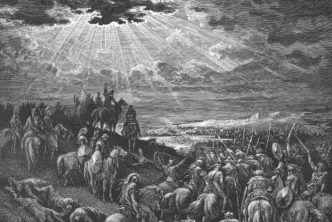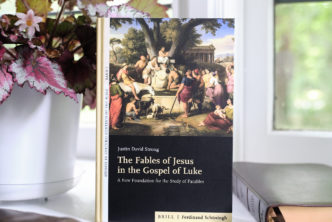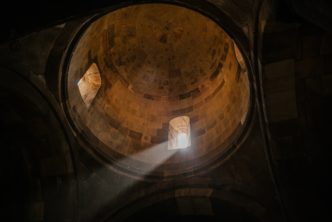In just over a week I will be heading to Atlanta to attend ETS/SBL for the first time. One of the sessions I’m most excited about is A Dialogue with Francis Watson’s Gospel Writing: A Canonical Perspective in the Matthew section on the afternoon of November 23 at SBL. Some of the foremost Gospels scholars of our day will be discussing one of the most significant recent contributions to the field.
In contrast to the conventional account of gospel origins that overlooks or undervalues reception, Francis Watson in Gospel Writing: A Canonical Perspective argues that “a single yet diverse reception process unites initial responses to Jesus by his followers with the articulation of the fourfold canonical gospel, by way of a transmission of tradition in which gospel writing plays a central role. This canonical perspective can accommodate many of the standard account’s individual findings, while relocating them within a fundamentally different and more comprehensive framework” (p. 6). Essentially, this study aims to provide a historical account for the genesis of the canonical gospel (dispensing of the prevailing end-of-first-century terminus ad quem and canonical/noncanonical boundary) that is at the same time sensitive to hermeneutics and theology.
In Part One, Watson first describes how Augustine harmonized gospel differences. Having argued that Augustine’s principles of gospel harmonization shaped subsequent Western understanding of gospel relationships and basically set the canonical gospel up to be dismantled by the Enlightenment, Watson continues on to tease this out with a chapter focused on Lessing and Reimarus. This first part essentially provides a background to how we got to current state of the “synoptic problem.”
Part Two is the heart of the book, and arguing against Q is the heart of Part Two. While he sees the potential usefulness of Q, Watson nonetheless asserts:
[Q] entails a radical reconstruction of Christian origins in which the real, historical Jesus is set in opposition to the canonical gospels, Paul, and the mainstream church. In conjunction with the quest it enables, Q is the definitive expression of liberal Protestant ambivalence toward catholic Christianity (p. 118).
In this section Watson spends two chapters arguing for what is alternatively referred to as the Goulder theory or Farrer theory—that Luke used Mark and Matthew in composing his Gospel (Watson prefers to refer to this simply as the L/M theory).
Subsequent to this detailed argument against Q, Watson reassess the significance of the Gospel of Thomas in light of the nonexistence of Q, arguing that “Thomas preserves certain formal characteristics of the primitive Christian Sayings Collection (SC), a genre that predated the synoptic gospels and that remained important throughout the second century.” (p. 221). Watson’s main contention here is that if Thomas is read in light of its genre, crucial evidence of presynoptic sayings transmission comes to light in a way that legitimizes the replacement of the Q hypothesis by an SC hypothesis, thereby shifting the key to synoptic origins from a hypothetical document to extant noncanonical material. Watson takes a similar approach with the Gospel of John, removing canonical boundaries and bringing noncanonical material brought into play; specifically, he argues for the Egerton gospel as a source for the Gospel of John. Watson concludes Part Two with an investigation of parallel interpretive processes in the gospels attributed to John, Thomas, and Peter to further develop his contention that gospels later deemed noncanonical can help the origin of the four gospels later deemed canonical.
The third and final part of Gospel Writing turns to Watson’s canonical construct. He sees “canonical” as an ascribed status rather than an inherent one; as such, Watson rejects the typical canonical/noncanonical distinction in gospels origin and instead adheres to a precanonical/canonical perspective in which gospels proliferated unchecked in the precanonical phase. Through extensive interaction with the writings of Clement, Eusebius, and Irenaeus, he argues that the fourfold gospel remained a work in progress until well into the fourth century with prior testimony neither clear nor universal. Watson’s masterful study next looks at the fourfold gospel’s practical implications for Origen and then its portrayal in early art and liturgy, before concluding with seven theses on Jesus and the canonical gospel.
Francis Watson’s Gospel Writing: A Canonical Perspective is a must-read for all with academic interest in gospels studies. From the intermediate student (whether formal or self-taught) to the Gospels/NT scholar and everyone in between, there is plenty of stimulating and paradigm- shifting content for all. I’m really looking forward to the opportunity to see/hear top scholars in the field interact with this book, especially with the more controversial and ground-breaking conclusions. In the SBL dialogue session with this book, Mark Goodacre will interact with Watson’s contention that an SC hypothesis should replace Q. Richard Burridge will give a paper on the biographical genre of the gospels, and whether this explains their development and their later recognition as canonical. Jonathan Pennington will present a paper in which he has adopted Watson’s canonical perspective, comparing and contrasting Matthew’s view of epistemology with other Gospels (both canonical and noncanonical) as well as SCs. Jens Schroeter will look at what Watson’s perspective means for the Gospel of Matthew in the process of “Gospel Writing.” The session will conclude with a response from Watson and a time of discussion.




I studied with Robert Lindsey and David Bivin in the 1960s at the Jerusalem School of Synoptic Research and the American Institute of Holy Land Studies. I believe that it was clear, even then, that the SC (logia as used by Papias) had far better arguments than any Q hypothesis that tried to contradict Paul and the perspective of the canonical gospels (and later church dogma). My own work showed how the chiastic structure of Matthew guided his use of the SC for his Jewish audience (which Robert Lindsey believed to be primarily priestly or Levitical in nature.) I now believe that the chiastic structure of Luke and Mark also influenced them in their use of the SC for their Greek/Roman audience and pretty much eliminates the need for any kind of “Q”. I think that chiasm is critical to understanding the composition and choices of Matthew. I am greatly looking forward to reading “Gospel Writing”.